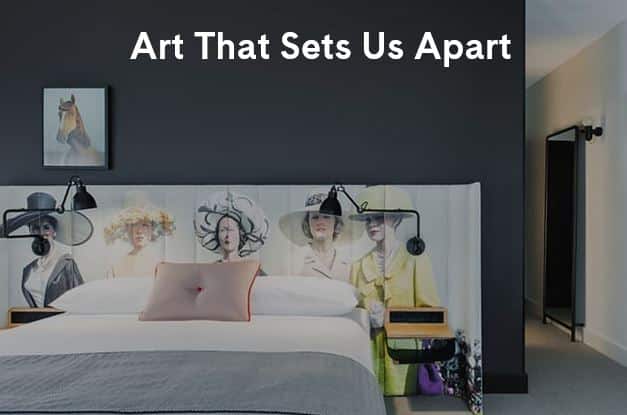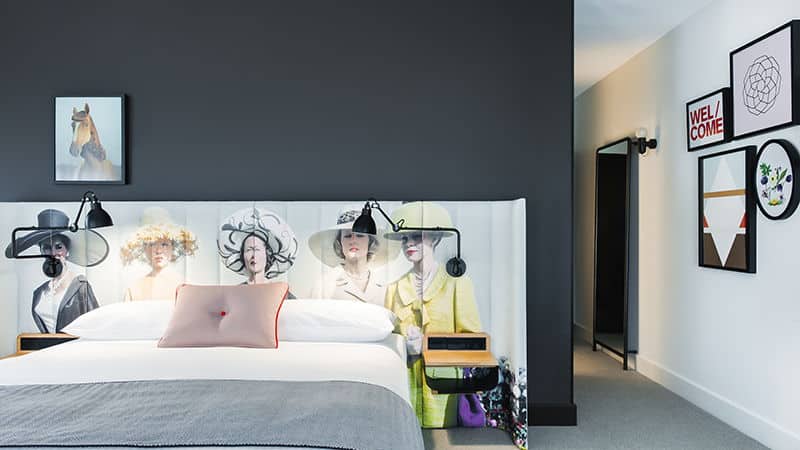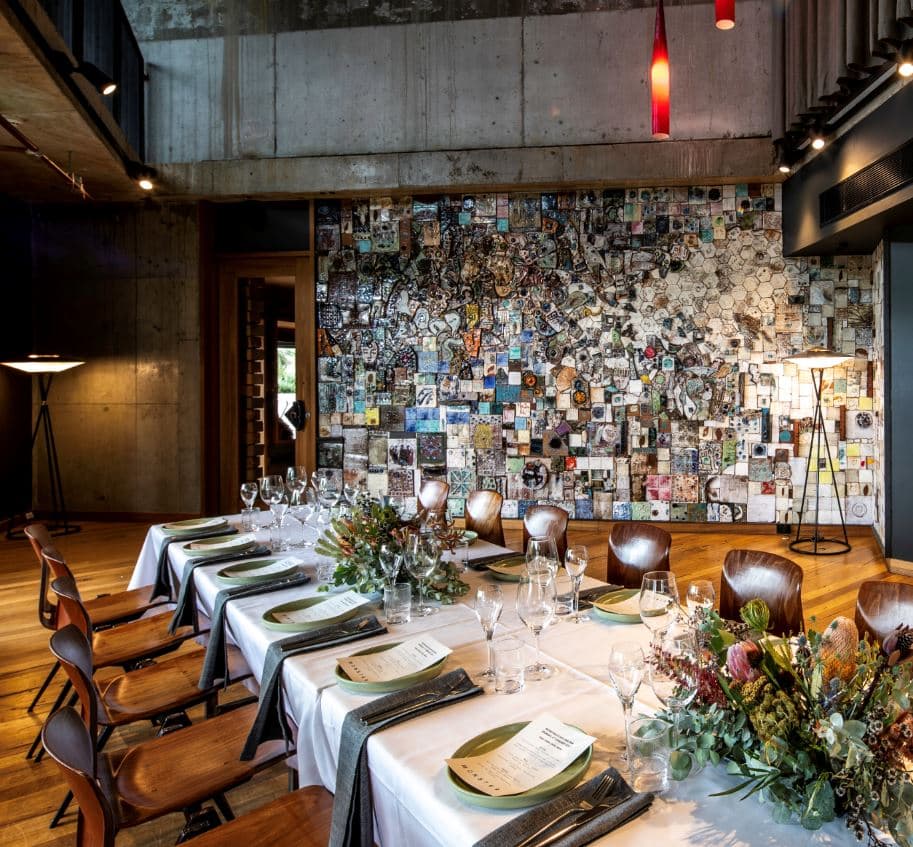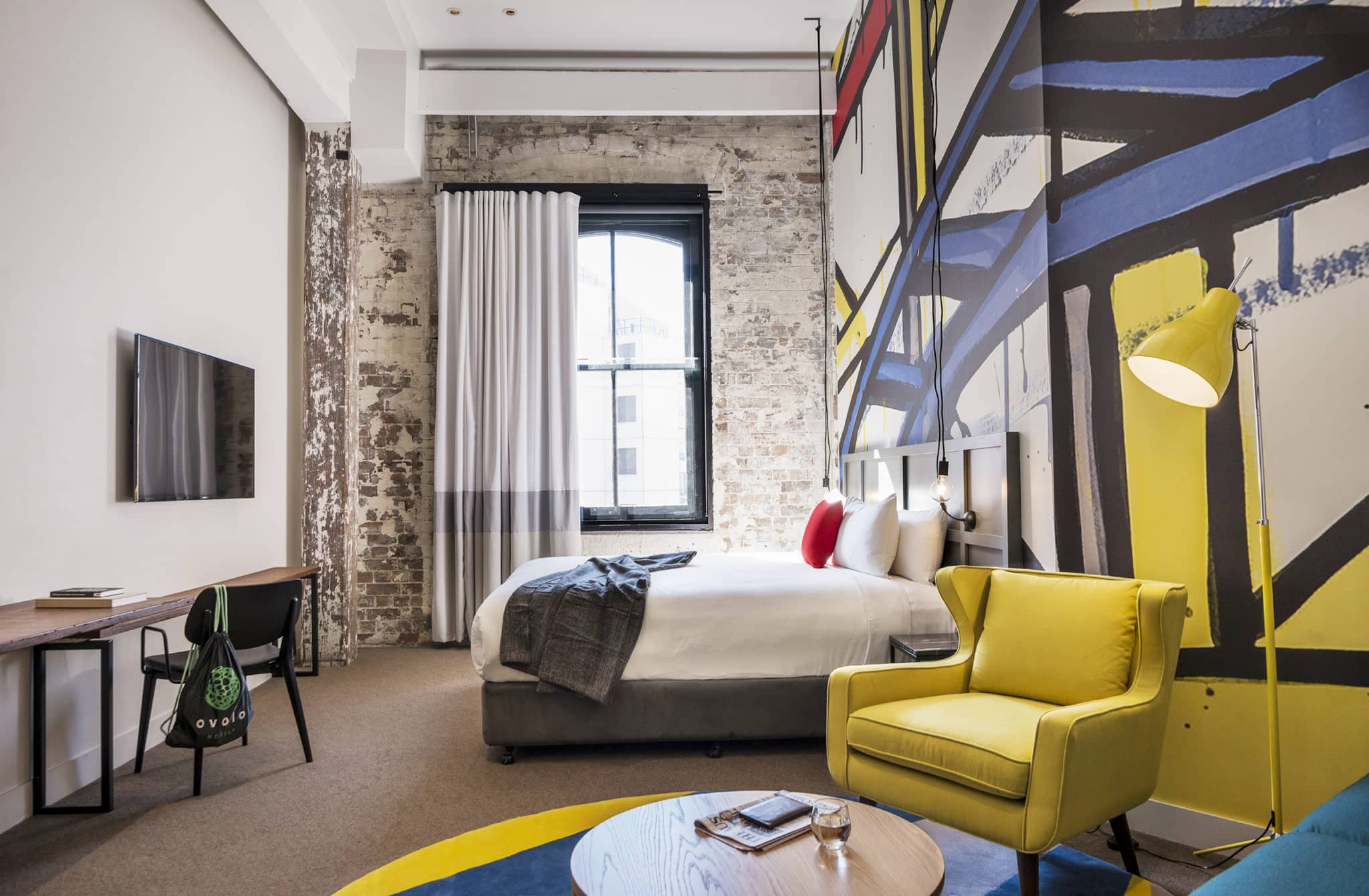Art That Sets Us Apart

What sets us apart from the rest? Well, it’s got to be the art on our walls in any of our hotels from Hong Kong to Australia. Whether quirky, rockin’, or just downright awesome, each piece is carefully handpicked to give you the perfect Ovolo experience. We’re going to walk you through a few of our favourite pieces.
- Women dressed up & wearing hats for Melbourne Cup, 1963, Victoria, Australia
The artworks situated within our funky rooms have been curated by Hassell Studio, carefully handpicked pieces to play on the Australian lifestyle and culture by using different styles of photography throughout the eras, as well as a number of visual cues.
This piece was taken during the Melbourne Cup in 1963, Victoria, Australia.

Ovolo Woolloomooloo
2) 12 Chairs By Enrique Rottenberg
The work of Enrique Rottenberg may be considered as controversial, and therefore the reason for the attraction that it causes, whether it be of allure or tension, laughter or pain, surprise or rejection, beauty and horror. Rottenberg’s photography tries to represent timeless and motionless scenes, stunned characters, and frozen stories, as if each and every one of them were shocked suddenly, while remaining irremediably suspended.
3) The collection of tile works featured around the Mosaic Room at Ovolo Nishi by Artist Gerard Havekes
Dutch immigrant artist Gerard Havekes was born in s’Hertogenbosch, Holland, in 1925. He was immersed in art practice from an early age due to his father’s architectural and etching milieu, which encouraged lively discussion in the home with fellow artists.
In 1950 he travelled to Sydney. At first, Havekes was a factory worker, making car parts and Band-Aids, and he also worked as a cleaner, mail sorter, builder’s labourer and nurse. At night he would paint and sculpt. During this time he had successful exhibitions of his expressionist paintings at the Bissietta Gallery, the Lady Marion Hall Best Gallery and the David Jones Gallery. He also attended the East Sydney Technical College with a view to developing skills in ceramics.
Havekes gleaned some technical knowledge but left to further develop this medium on his own, quickly establishing his own style. Working closely with interior designers and architects such as Peddle Thorpe & Walker, and Kahn & Finch, Havekes integrated his work, for beautification, into the exteriors and interiors of numerous large building projects in major cities and regional towns such as Broken Hill.
Havekes acquired kilns, learnt how to mix glazes and to fire clay and create his own, handmade variety. He was probably the first in Australia to do this on a significant scale.
He continually remodelled and refurbished his Kenthurst home and it was often featured in magazines such as Belle, Vogue and House & Garden, with one calling it ‘’the most photographed house in Australia’’. The house was a fluid, ill-defined mix of work studio and living quarters. His ceramic studio comprised nine electric kilns he built and modified himself.
Moving to a huge warehouse in Leichhardt in the late ‘80s allowed Havekes to be more involved with the city. He continued to work with ceramics and paint, draw and sculpt, and developed the medium of large-scale, three-dimensional tapestry, having them made in Hong Kong, where he travelled to supervise their construction. There are two in the foyer of the United Overseas Bank building in Martin Place. Havekes passed away in 2011.
Hotel interior designer Don Cameron discovered Havekes’ ceramic work through Mid Century collector Ken Neale, instantly appreciating it’s raw, textured aesthetic and niaive brutality. The chromatic pallette and metallic glazes are rarefied.
Cameron engaged a 2 year negotiation with Haveke’s family about the sourcing of the remainders, overages, and unrealized ceramic works of Gerard’s proposing they be used in a monumental relief for Hotel Hotel atrium. Daughter of Gerard, Anna-Maryke has guided family discussions relating to Havekes’ legacy and has assisted Cameron in the assemblage and design of the final work.
 Mosaic Room, Ovolo Nishi
Mosaic Room, Ovolo Nishi
4) Murals by artist Jasper Knight
The 90 rooms and suites have exposed brick walls, contemporary furnishings and vibrant red, yellow and blue murals by local artist Jasper Knight. Jasper Knight collaborated with The Woolstore 1888 Hotel Pyrmont to create vibrant spaces in each room of the hotel.
 The Woolstore 1888 Darling Harbour
The Woolstore 1888 Darling Harbour
5) Einsten By Mr. Brainwash
The work of Mr. Brainwash is rooted in pop art. As Warhol looked to icons of consumer culture and celebrity, Mr. Brainwash looks to art and entertainment as the subjects of his work. Mr. Brainwash uses pop art that is departed from art’s tradition in favour of images of popular culture. Mr. Brainwash includes artistic tradition and even prior pop art as the subject of his work.
Mr. Brainwash (MBW) is the pseudonym for the graffiti street artist Thierry Guetta. Mr. Brainwash was born in France in 1966. Rising to prominence due to a heavily hyped exhibition and a Banksy directed documentary entitled, “Exit Through the Gift Shop,” the French artist Mr. Brainwash was once a clothing store owner named Thierry Guetta. He came to the United States with his family years before he would become one of contemporary art’s largest and most confusing personalities.
 Situated at the basement at Ovolo South Yarra
Situated at the basement at Ovolo South Yarra
